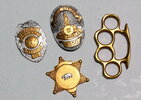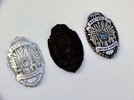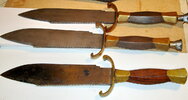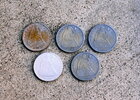My pleasure! And I should have been more specific...you can mix the powders themselves to produce other metalics, myself I mix a bronze and gold to produce the correct coloring of the gold resistors on ghostbuster traps. Can’t wait to see more!
Need some help from the cold casting experts.
- Thread starter NakedMoleRat
- Start date




